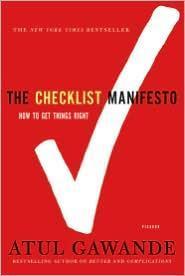Really important read, put it on your list
5 stars
This is a must-read for anyone facing point of no return situations, and not even life or death cases as discussed in the book like surgery (with personal experience from the author) and aviation (the inspiration for applying checklists to surgery). Even in software, where we now take for granted checklists of the automated kind, obviously there are cases of bad releases, bad deployments, and bad ideas (and actually, some of those could kill people). Like anything else, the idea can be used badly (I've had a manager use a checklist as a power trip tool), but at its most effective it changes culture so that teams (not just a lone hero as, the book points out, the press tends to highlight, because hey great teamwork doesn't make headlines) know what to do in an emergency and better yet, avoids them.


